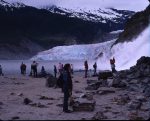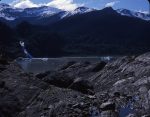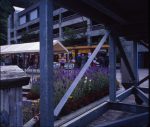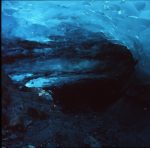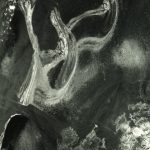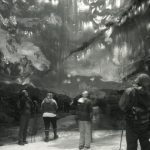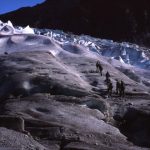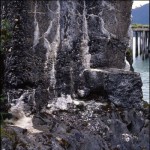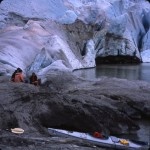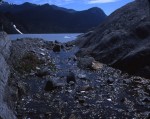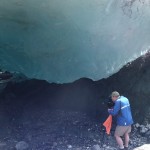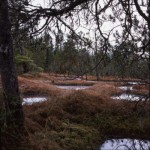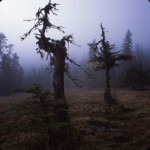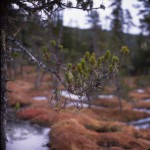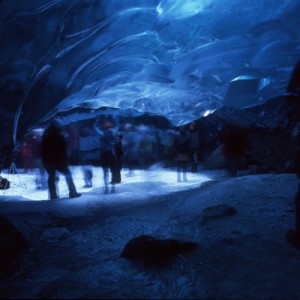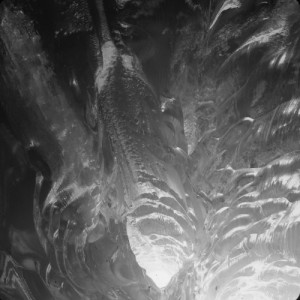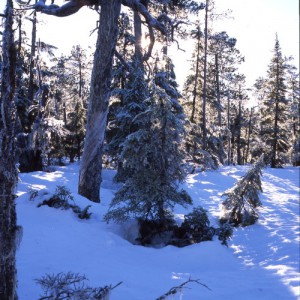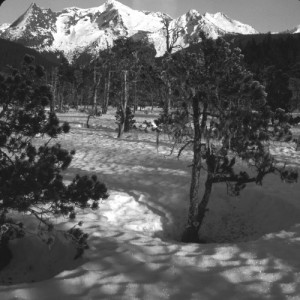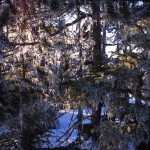If the Juneau tourists get a bus to the Mendenhall Glacier, a mile long walk along the willows on the lake shore will bring them to the bottom of Nugget Creek. It offers a nice waterfall, and good view of the glacier.We’ve been here before.
And if one walks several miles up the “left” side of the lake, and climbs a little, it is much quieter and less crowded. Not many unguided tourists make it this far up the trail, so when I meet one I try to make them feel welcome. If the lenses in your viewer are good, you can see the crowd of tourists on the beech at the base of the waterfall.
Twenty years ago, all the open water in both images was ice. The face of the glacier was just past the rightmost iceberg in the second image. At that time, the bedrock was below more than 100′ of ice, and Nugget Falls disappeared under the edge of the glacier.
Both images are from my TL120, Nugget Falls has been captured with Kodak E100G rather than my usual Provia.
